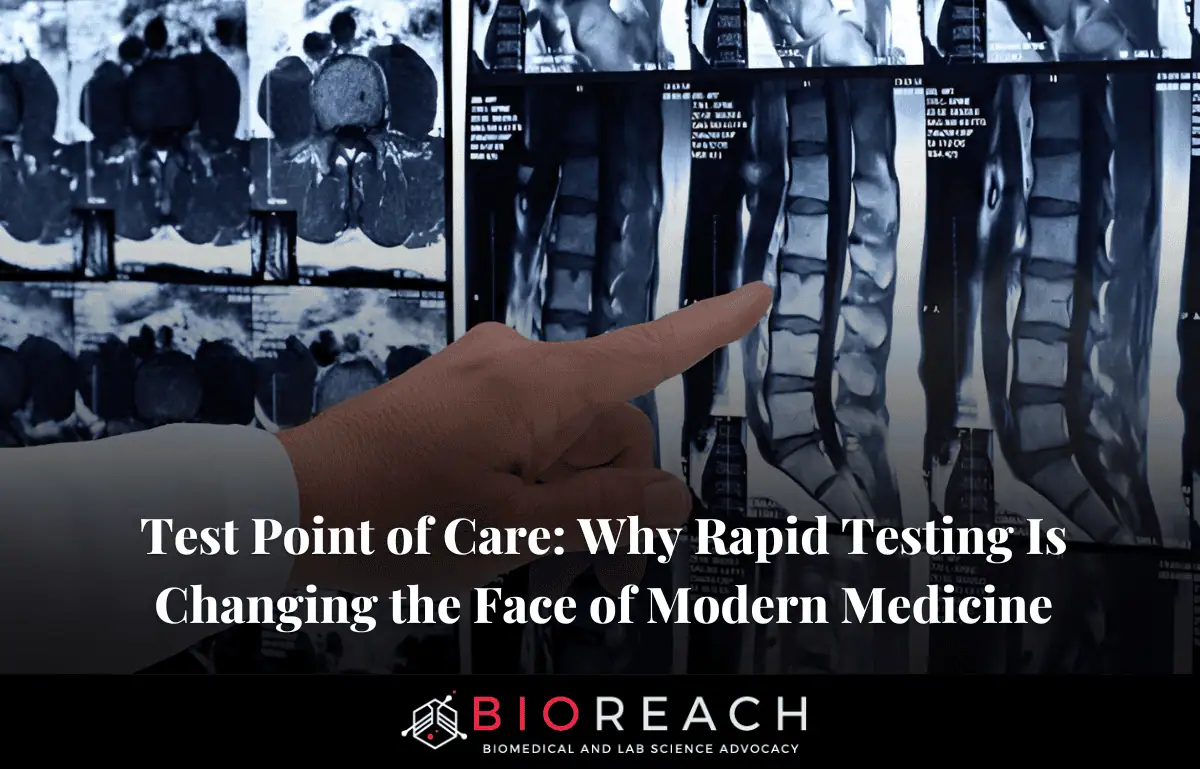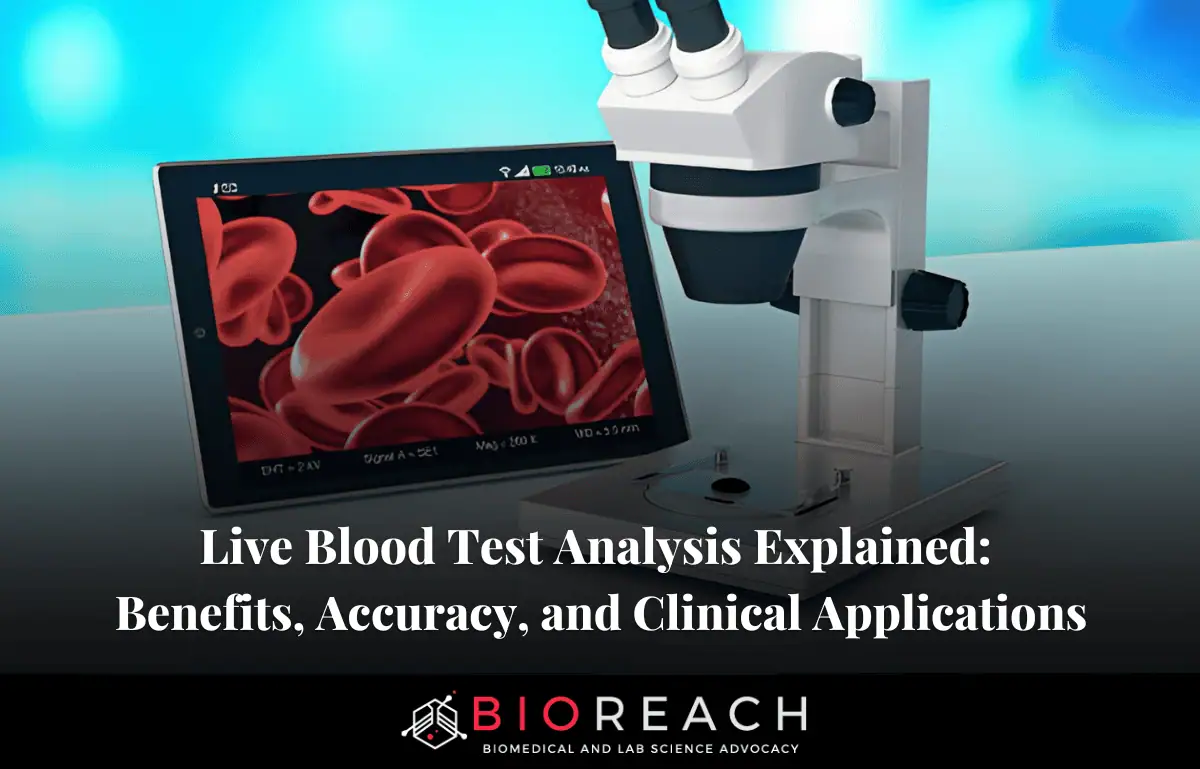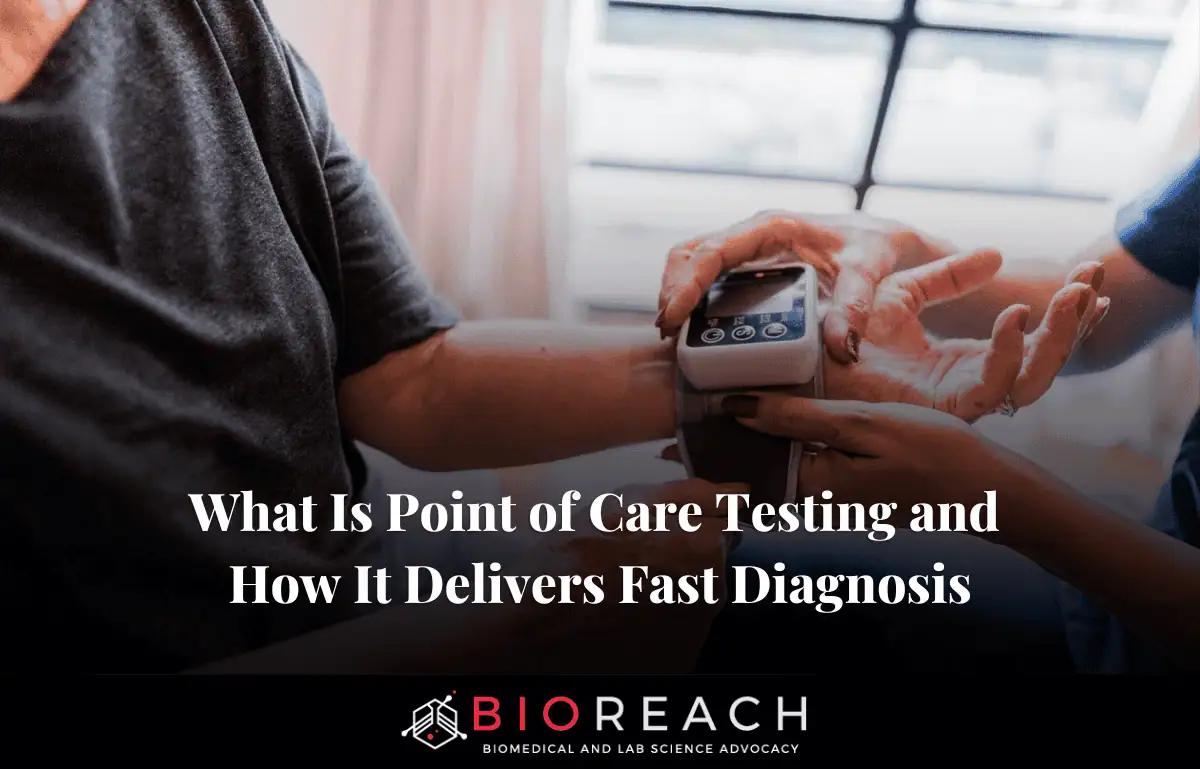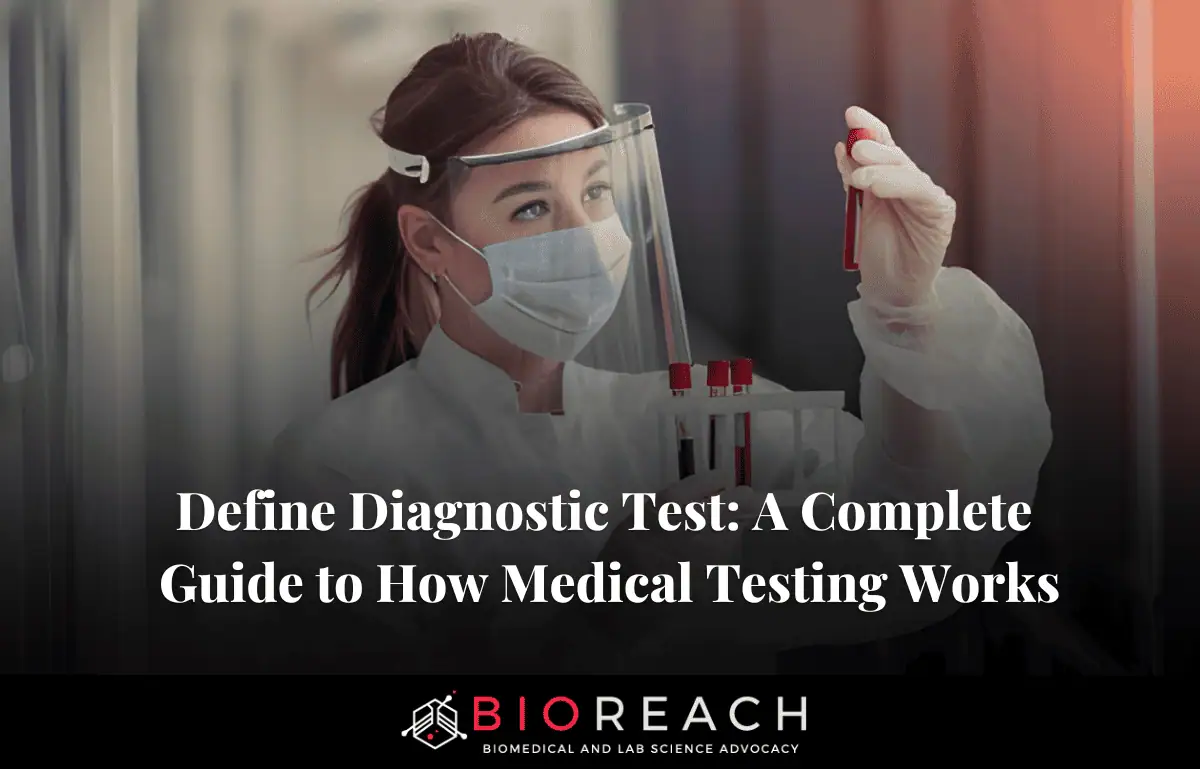Test Point of Care technology has redefined how and where diagnostics happen. A paramedic kneels beside a collapsed runner in Central Park, slips a finger-prick cartridge into a handheld analyzer, and within 90 seconds identifies life-threatening hyperkalemia. In a Kenyan maternity ward, a midwife uses a solar-powered reader to scan a malaria strip and confirms infection before delivery, ensuring immediate treatment. At a drive-through clinic in Seoul, a teenager swabs her nose and receives a flu A/B + RSV result on her phone within minutes. These are not futuristic scenes; they’re everyday realities in 2025. Test Point of Care innovations have transformed diagnostics by shrinking turnaround times from days to minutes and bringing laboratory precision directly to the patient’s side.
The global test point of care market hit $42 billion in 2025, growing 11.4% year-over-year according to Fortune Business Insights, with 2.1 billion tests performed annually, 40% of all diagnostic volume. This seismic shift isn’t just technological; it’s clinical, economic, and societal. Test point of care now drives 52% of antibiotic decisions in U.S. emergency departments, 38% of chronic disease adjustments in primary care, and 100% of field responses in 47 active WHO-declared outbreaks. This article dissects why test point of care is the most disruptive force in modern medicine since the stethoscope: its operational blueprint, biomarker portfolio, outcome data, implementation frameworks, cost-benefit calculus, equity imperatives, risk vectors, and the AI-orchestrated future awaiting by 2030.
Defining Test Point of Care: Precision in Proximity
Test point of care is formally defined by the International Organization for Standardization (ISO 22870) as “diagnostic testing performed near or at the site of patient care, where the result is available without reference to a traditional laboratory and leads to immediate clinical action.” Four non-negotiable attributes separate TPOC from send-out testing:
- Spatial immediacy: within 10 meters of the patient
- Temporal urgency: result-to-action interval under 30 minutes (median 7 minutes in 2025)
- Operational autonomy: executable by trained non-laboratorians
- Actionable fidelity: >95% concordance with gold-standard methods
The lineage begins with the 1968 Ames Clinitest urine glucose tablets. The 1980s delivered the first electrochemical glucometer. The 1990s scaled cartridge-based chemistry with Abbott’s i-STAT. COVID-19 catalyzed the breakthrough: 1.4 billion antigen test point of care units deployed globally by 2024. In 2025, the FDA maintains a registry of 1,612 cleared TPOC devices: 72% CLIA-waived, 20% moderate complexity, 8% high complexity for near-patient hospital deployment.

The TPOC Technology Matrix: Platforms, Assays, and Connectivity
Test point of care hardware spans benchtop, handheld, and wearable form factors, unified by microfluidic, biosensor, and photonic principles. The ecosystem in 2025 comprises:
- Molecular TPOC: isothermal amplification (Abbott ID NOW), loop-mediated isothermal amplification (LAMP), and miniaturized real-time PCR (Cepheid GeneXpert Go)
- Immunoassay TPOC: lateral flow with fluorescent or magnetic readout (QuidelOrtho Sofia 2, LumiraDx)
- Hematology TPOC: impedance cytometry in 15 µL capillary blood (Sysmex XW-100)
- Chemistry TPOC: dry-slide spectrophotometry or ion-selective electrodes (Nova StatStrip)
- Wearable TPOC: continuous lactate, glucose, or electrolyte patches (Nova Biomedical, Dexcom)
Connectivity is mandatory; 96% of 2025 devices transmit via Bluetooth 5.2, 5G, or LoRaWAN to middleware (e.g., Orchard Point-of-Care, Telcor QML) that auto-populates EHRs and triggers order sets. A single TPOC cartridge now multiplexes up to 24 pathogens (BioFire FilmArray POC), rivaling central lab panels in scope.
Clinical Integration: How Test Point of Care Rewires Care Pathways
Test point of care embeds at every acuity level, collapsing decision loops.
Emergency medicine leverages cardiac troponin I (Siemens Atellica VTLi) and lactate (Nova StatStrip Xpress) to stratify chest pain; door-to-balloon time fell from 82 to 51 minutes in a 2025 Circulation study of 18,000 patients. Sepsis bundles incorporate qSOFA + procalcitonin TPOC (B·R·A·H·M·S PCT direct), initiating antibiotics 2.1 hours earlier and reducing 28-day mortality by 11%.
Primary care deploys HbA1c + lipid TPOC (Abbott Afinion 2) for same-visit diabetes and CVD risk adjustment; medication adherence rose 29% when patients saw results instantly. Obstetrics uses fetal fibronectin TPOC (Hologic Rapid fFN) to rule out preterm labor in 10 minutes, averting 68% of unnecessary tocolysis admissions.
Public health deploys TPOC for active case detection: 3.2 million malaria RDTs in Nigeria in Q3 2025 alone, enabling same-day treatment and transmission interruption.
Performance Benchmarks: Accuracy in the Real World
Skepticism about TPOC precision has evaporated under 2025 evidence.
- Influenza A/B + RSV multiplex (Roche cobas Liat): 98.6% sensitivity, 99.1% specificity vs. lab RT-PCR
- High-sensitivity troponin I (Quidel TriageTrue): 99% sensitivity at 6 ng/L cutoff, negative predictive value 99.8% for 30-day MACE
- HIV-1/2 Ag/Ab combo (Determine): 100% sensitivity in symptomatic patients
- Blood gas + electrolytes (epoc): bias <0.05 mmol/L vs. Radiometer ABL90
Proficiency testing programs (CAP, UK NEQAS) report TPOC failure rates of 0.7%, lower than central lab send-outs (1.1%) due to integrated quality controls that lock devices after two failed runs.

Implementation Frameworks: From Pilot to Enterprise Scale
Successful test point of care deployment demands governance, not gadgets.
- Governance: Multidisciplinary POCT committees (physician, nurse, lab, IT, pharmacy) define test menus, competency, and reflex algorithms
- Training: 4-hour e-learning + hands-on certification; annual re-credentialing with observed structured clinical examinations (OSCEs)
- Quality: Daily electronic quality control (eQC), lot validation, and operator lockout after three failures
- Connectivity: Middleware aggregates 14 vendors into one dashboard; 2025 KLAS report ranks RALS (Alere) highest for uptime (99.97%)
- Financing: Capex for devices ($8,000-$45,000) offset by opex savings; ROI achieved in 11-14 months via reduced length of stay
Kaiser Permanente’s Northern California region runs 1,800 TPOC devices across 21 hospitals and 240 clinics, processing 4.1 million tests yearly with 0.04% critical result delays.
Economic Impact: Beyond Cost per Test
Raw reagent costs for test point of care range $4- $38 versus $1-$12 in central labs, but system-level savings dominate.
| Metric (U.S. ED, 2025) | Central Lab | Test Point of Care | Delta |
| Length of stay (hours) | 5.9 | 3.4 | –42% |
| Admission rate (%) | 24 | 11 | –54% |
| Antibiotic initiation (min) | 178 | 61 | –66% |
| Total cost per sepsis case | $19,200 | $13,800 | –28% |
A Health Affairs meta-analysis of 1.8 million encounters calculated $3.4 billion in annual U.S. savings from TPOC-driven de-escalation and discharge. In low-resource settings, malaria TPOC averted 1.1 million unnecessary ACT courses in 2025, saving $180 million per WHO estimates.
Equity Imperative: Closing the TPOC Divide
Despite ubiquity in high-income nations, gaps persist. Only 12% of sub-Saharan African primary health centers have functional TPOC beyond malaria RDTs. Rural U.S. critical access hospitals average 2.1 TPOC assays versus 14.3 in urban tertiary centers. Uninsured patients face $35-$120 out-of-pocket for urgent TPOC.
- Gavi/Global Fund: Subsidizes HIV, TB, and malaria TPOC in 52 countries
- USAID DREAMS: Solar-powered TPOC hubs in 180 East African sites
- HRSA Tele-POCT: Grants for 1,400 U.S. FQHCs to deploy cardiac and infectious panels
A 2025 Lancet Global Health study found TPOC equity investments yield 18:1 societal ROI through reduced morbidity.

Risk Mitigation: Operator, Supply, and Algorithmic Safeguards
Operator error remains the leading TPOC failure mode (14% of incidents). Mitigation includes biometric login, video-guided workflows, and AI proctoring that flags technique deviations in real time. Supply chain fragility, exacerbated by 2024 cartridge shortages, prompts dual-sourcing and 3D-printed emergency cassettes (Formlabs pilot in Haiti).
Algorithmic over-reliance caused three documented 2025 deaths from false-negative procalcitonin TPOC in early sepsis; clinical decision support now mandates central lab confirmation for values in the 0.5-2.0 ng/mL gray zone.
The 2030 TPOC Horizon: Implantable, Ambient, and Predictive
By 2030, the test point of care will evolve into continuous, invisible diagnostics.
- Implantable TPOC: Abbott Libre Sense Glucose Sport + ketone chip auto-adjusts insulin and hydration in athletes
- Ambient TPOC: Smart mirrors (Withings) analyze breath VOCs for early pneumonia; smart toilets (Toto) detect UTI biomarkers in urine flow
- Swarm TPOC: Drone networks deliver multiplex cartridges to Amazonian villages, return results via satellite
- AI-Orchestrated TPOC: Google Health’s Care Studio predicts sepsis 4 hours early from wearable lactate + heart rate variability TPOC
- Market Projection: $92 billion, with 62% of all diagnostic volume at the point of care
Conclusion
Test point of care has demolished the tyranny of distance and delay in medicine. From stabilizing a marathoner’s electrolytes in 90 seconds to interrupting malaria transmission in a refugee camp, TPOC delivers laboratory precision where it matters most, beside the patient. The data are unequivocal: faster antibiotics, fewer admissions, lower costs, and lives saved at scale. Yet success demands rigorous training, connectivity, equity funding, and algorithmic humility.
Clinicians must embed TPOC into evidence-based pathways with reflex rules. Administrators must finance connectivity and competency, not just devices. Policymakers must treat TPOC as critical infrastructure, especially in underserved regions. Patients must demand transparency on limitations and results.
The face of modern medicine is no longer the ivory tower laboratory; it’s the glowing screen of a handheld analyzer in a clinician’s palm, delivering answers in the time it takes to draw breath. Test point of care isn’t the future; it’s the present, and it’s saving lives one rapid result at a time.














